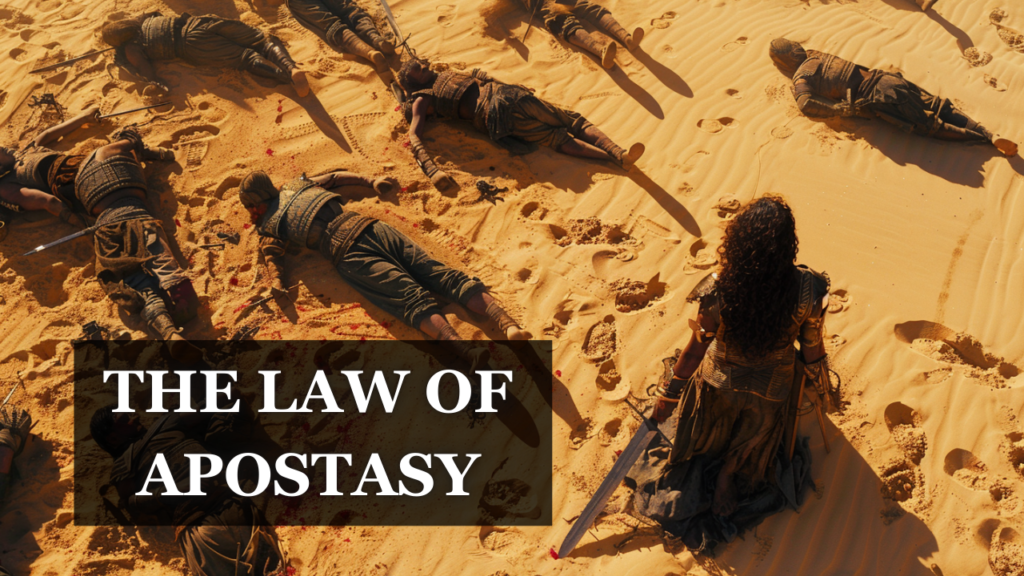Imagine you were a believer in the year 750 AD, roughly 120 years after the Prophet Muhammad’s passing. You wake up wanting to fulfill your religious obligations, follow the laws of the religion correctly, and earn God’s pleasure. But here’s the problem that should keep you awake at night: The “essential” hadith collections that modern Muslims consider indispensable don’t exist yet. Bukhari won’t be born for another 44 years. The sophisticated legal schools (madhhabs) that claim to preserve authentic Islamic practice are still decades away from existing. The authentication methods supposedly required for “proper” Islamic practice won’t be developed for another century. Were you practicing an incomplete religion?
According to the Quran, the answer is emphatically no:
[5:3] … Today, I have completed your religion, perfected My blessing upon you, and I have decreed Submission as the religion for you ….
This declaration, revealed in Medina, creates an uncomfortable challenge for traditional Islamic methodology: If God completed the religion in the 7th century, why do we need 8th and 9th-century human compilations to practice it properly?
The Timeline That Destroys the Traditional Narrative
7th Century (Prophet’s Lifetime):
- Quran revealed and compiled during Prophet’s life
- Religion declared “complete” by God (5:3)
- Early Muslim community established and functioning
- No hadith collections exist
- No formalized legal schools
- No systematic authentication methods
8th-10th Centuries (150-300 Years Later):
- Imam Bukhari compiles hadith (d. 870 CE) — 240+ years after the Prophet
- Imam Muslim compiles hadith (d. 875 CE) — 245+ years after the Prophet
- Authentication categories (sahih, hasan, da’if) formalized
- Four legal schools (madhhabs) systematized
- Principles of jurisprudence (usul al-fiqh) developed
If these later developments were truly necessary for practicing the religion, then either:
- God lied when He declared the religion complete in 5:3, OR
- The first 200+ years of Muslims were practicing an incomplete religion
Both conclusions are theologically unacceptable, leaving us with a third option: The religion was indeed complete as God declared, and later additions are human innovations.
What Hadith Compilation Actually Required:
- Collecting oral reports transmitted across 7-10 generations
- Evaluating narrator reliability when no contemporary documentation existed
- Sorting “authentic” reports from acknowledged widespread fabrication
- Creating binding legal obligations based on these reconstructions
- Establishing death penalties based on orally-transmitted stories
Even hadith compilers acknowledged the problem’s magnitude:
- Imam Bukhari examined over 600,000 reported hadith
- He accepted only ~7,000 as authentic
- That’s a 1.2% authenticity rate by his own standards
- If 98.8% of circulating reports were fabricated or unreliable, how can the remaining 1.2% serve as a foundation for binding religious law?
Let’s examine what “completion” actually means in the context of Quran 5:3 by looking at the original Arabic and its implications. The Arabic text reads: “Al-yawma akmaltu lakum dinakum wa atmamtu alaikum ni’mati wa radeetu lakumu al-islama dinan.” The key terms here carry profound theological weight.
Akmaltu (أَكْمَلْتُ)
- Root: ك-م-ل (k-m-l)
- Basic meaning: to be complete, whole, without deficiency.
- Form IV (afʿala): akmala = to cause something to reach its state of wholeness, to perfect.
- So akmaltu = I have completed/perfected/made whole.
- Here it applies to your religion (dīnakum), meaning it has now reached its full, intact state — nothing deficient in it.
Atmamtu (أَتْمَمْتُ)
- Root: ت-م-م (t-m-m)
- Basic meaning: to finish, bring to an end, fulfill.
- Form IV: atmama = to bring something to its full completion, to conclude.
- So atmamtu = I have fully completed/fulfilled.
- Here it applies to My favor upon you (niʿmatī). This indicates the divine favor (niʿmah = blessing) has been brought to its completion/fulfillment.
Raḍītu (رَضِيتُ)
- Root: ر-ض-و (r-ḍ-w)
- Basic meaning: to be pleased, content, satisfied, approve.
- Form I: raḍiya = to be pleased with, to accept.
- So raḍītu = I have approved, accepted, am pleased with.
- Here it applies to al-islām as your dīn.
The logical implication is clear. If God perfected the religion and completed His favor, then any later additions must fall into one of three categories: they are unnecessary because the religion was already complete, they represent improvements on God’s work (which is theologically impossible), or they constitute corrections to divine oversight (which is also theologically impossible).
There is no fourth option that preserves both divine completeness and the necessity of later human additions. This creates what I call the divine completion paradox that traditional Islamic methodology has never adequately resolved.
Burden of Proof: Shifted
Traditional Islamic methodology has been asking the wrong question for centuries. Instead of asking “How do we prove the Quran is sufficient despite the Sunnah’s existence?” traditionalists should be asking a far more challenging question: “What justification exists for adding human legislation to a religion God declared complete?“
The burden now rests entirely on those claiming that God’s declaration of completion was somehow premature or false, that oral reports from 200+ years later are necessary for practicing the religion, and that human scholars can legitimately legislate religious obligations beyond what divine revelation established.
It means that every hadith-based legal ruling, every jurisprudential innovation, every sectarian division based on disputed narrations must now justify its existence against the backdrop of divine completion. The question is no longer whether Quran-alone adherents can prove their position, but whether traditionalists can justify theirs without implicitly contradicting God’s own declaration about His revelation.
- Hadith compilations (Bukhārī, Muslim, etc. — 200+ years later).
- ʿIlm al-Rijāl (biographical evaluation of narrators).
- Hadith contradiction reconciliations (massive commentaries trying to harmonize conflicting reports).
- Hadith grading hierarchies (ṣaḥīḥ, ḥasan, ḍaʿīf, mawḍūʿ — none of which existed in the Prophet’s time).
- Categorization of mutawātir vs. āḥād reports.
- Books of abrogation (naskh) — deciding which Quranic verses supposedly cancel out others.
- Tafsīr literature — layers of commentary written centuries later to explain what the Qurʾān allegedly “really” means.
- Uṣūl al-fiqh (principles of jurisprudence) — the human-made framework for deriving rulings outside of the Qurʾān.
- Madhhabs (legal schools) — four rival systems, each claiming to represent the “authentic” Islam.
- Fatwa systems — a perpetual need for clerics to issue binding rulings because the “complete” religion is apparently unusable without them.
- Later reconciliation projects (like Ibn Ḥajar and al-Nawawī) to resolve disputes in hadith authenticity and interpretation.
- Scholastic theology (kalām) — speculative doctrines to patch logical contradictions between Qurʾān, hadith, and juristic rulings.
So the irony becomes inescapable:
“Yes, God completed the religion in the 7th century… but we still needed to wait another 300 years for massive book projects, legal inventions, and scholarly hierarchies to actually practice it correctly.”

